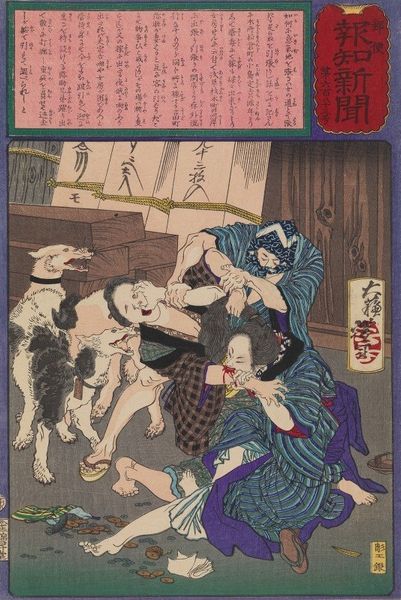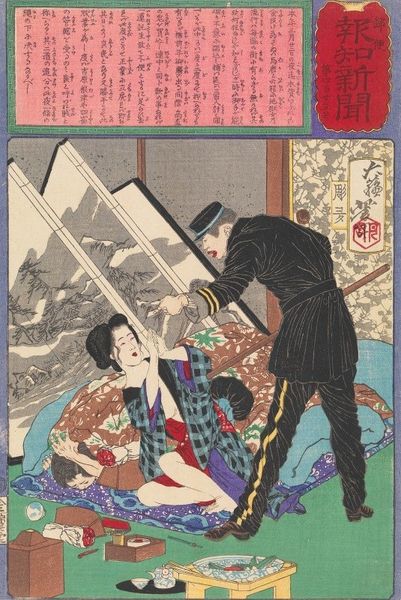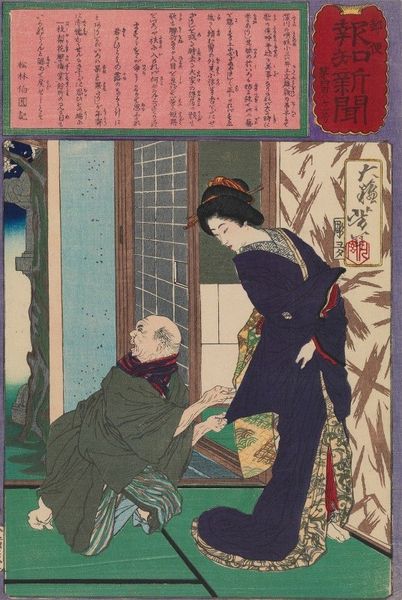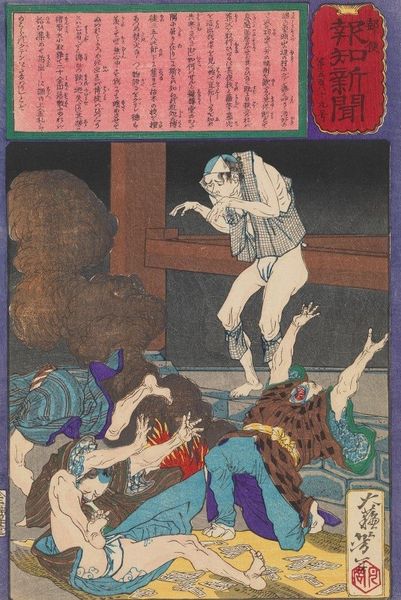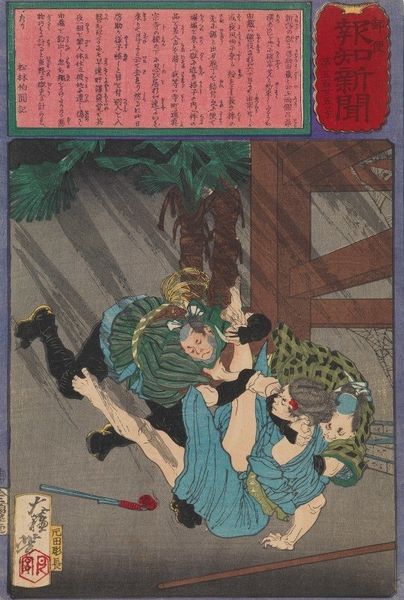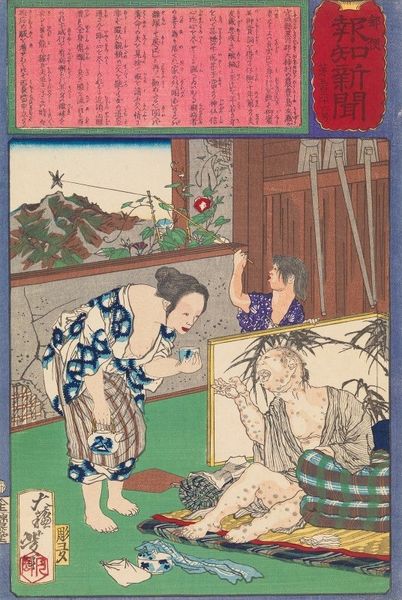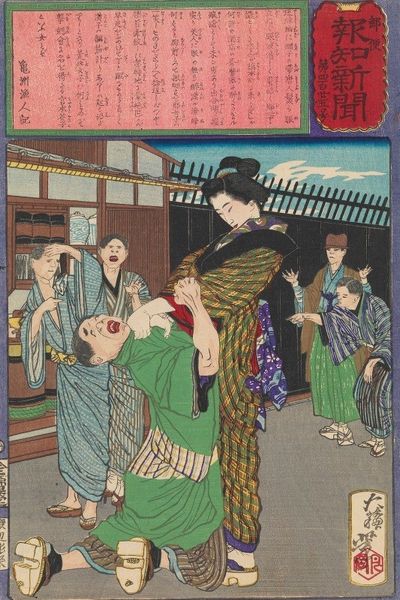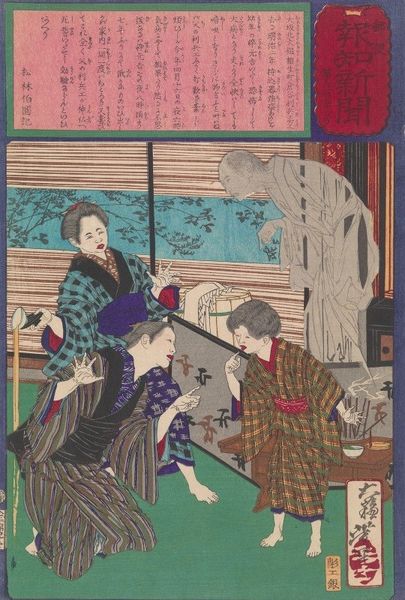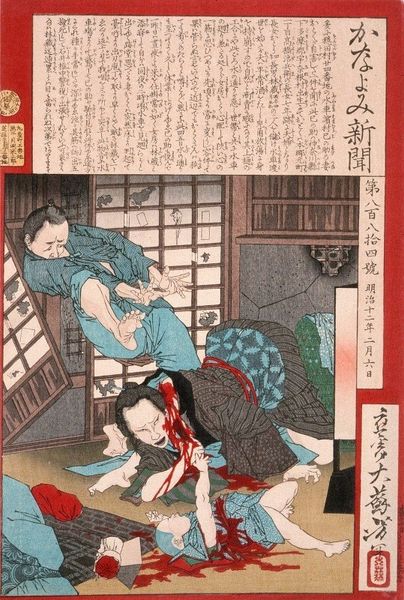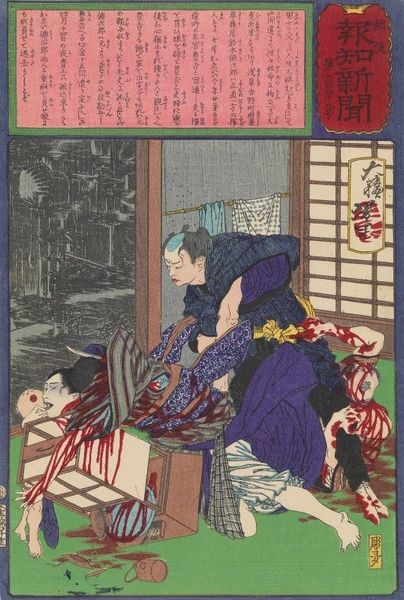
Copyright: Public Domain: Artvee
Curator: This print, created by Tsukioka Yoshitoshi in 1875, is titled "A Wicked Foreigner Refuses to Pay a Young Prostitute". It's a striking example of ukiyo-e woodblock printing. Editor: My first impression is the dynamism—a woman seemingly in mid-air, her face a mask of distress. The tension between the figures is palpable, heightened by the texture of the woodblock. Curator: Indeed. The artist utilizes vibrant color and decisive lines. Note how the woodblock medium lends itself to bold contours and flat planes of color, underscoring the stark contrast between the Western man in his sharply tailored suit and the traditionally dressed Japanese woman. The Western presence in Meiji-era Japan, with its attendant economic and social imbalances, clearly plays a role here. Editor: Exactly. And let’s consider the labor involved. The process of creating these prints involved the skilled hands of carvers and printers, translating the artist’s vision into a repeatable image. It points to a complex economy of art production aimed at mass consumption, especially given the text in the top margin—indicating distribution, circulation and potentially even legal proceedings, acting almost like a document of the current affair. Curator: It reflects the societal anxieties of the time. The depiction of the "wicked foreigner" feeds into existing stereotypes while simultaneously humanizing the plight of the young prostitute, making visible the consequences of cultural collision and exploitation in the booming entertainment districts. What purpose does it serve politically? Does it further the gap? Or does it make a point about the shifting powers and identities? Editor: The print also draws upon conventions of erotic art but re-frames them. Here, the artist highlights social commentary about commodification, exploitation and the vulnerable state of some sex workers that challenges purely aesthetic or titillating viewing pleasure. It creates a stage to see the political theatre around consumption within an already vulnerable system. Curator: I agree, thinking through it from those elements adds to the political stage the print creates. This image allows us to really reconsider our own social structures through a different lens by emphasizing how they work together through materials and audience consumption. Editor: And I've found it fascinating to analyze how this singular artwork can be used as a symbol of the era by exploring the intricacies behind society and culture at the time.
Comments
No comments
Be the first to comment and join the conversation on the ultimate creative platform.

